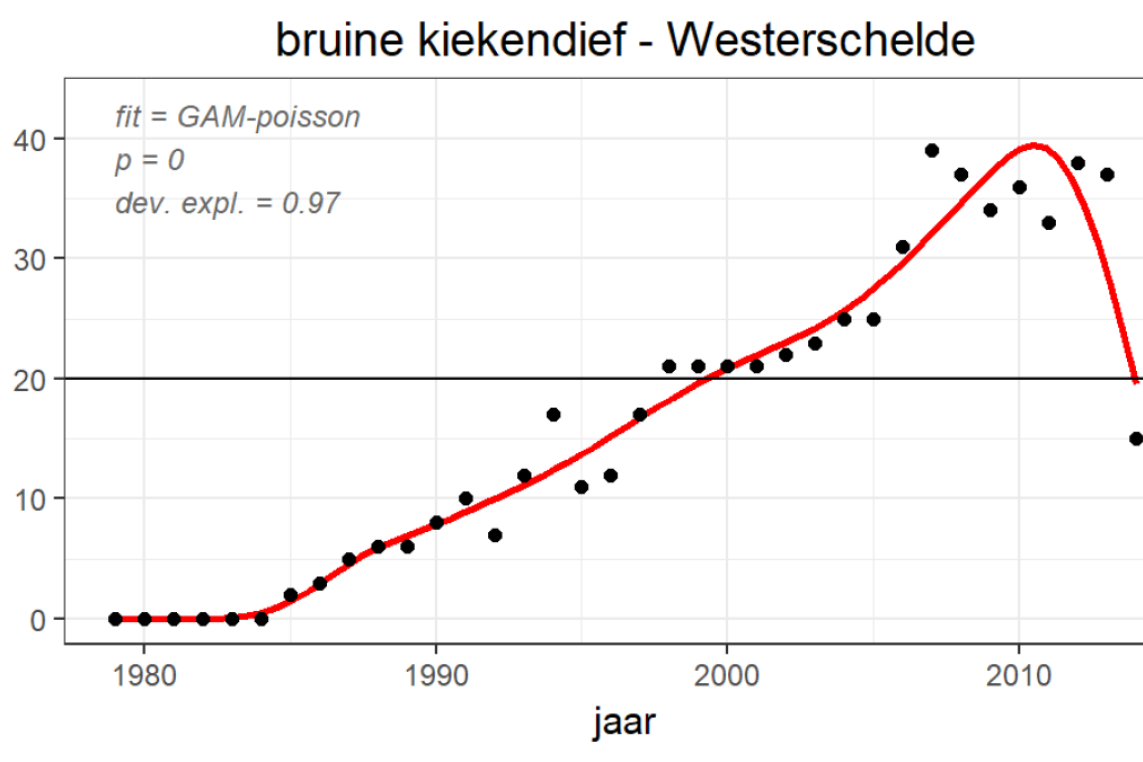Species diversity
The number of species of animals, plants, microorganisms, etc., present within an ecosystem can vary greatly. Biodiversity is a measure of genetic, species, and ecosystem diversity. Species richness is increasingly used as an indicator of the state of an ecosystem. The presence and abundance of a species are largely determined by the quality and quantity of the habitat in which that species lives, see also the thematic page ‘Diversity of Habitats’. Furthermore, various species play different roles within the ecosystem and are therefore often indispensable for the functioning of that ecosystem. In many cases, it is also true that an ecosystem with greater species diversity is more resilient to disturbances. It is therefore important to monitor biodiversity, as well as the occurrence of various key species and invasive species, in the Scheldt estuary. This is included in the ‘Nature’ section of the ‘Agenda voor de Toekomst’ of the VNSC.
Due to the unique transition from fresh to salt water with tidal influence, an estuary such as the Scheldt estuary provides a suitable habitat for various internationally protected and ecologically and economically valuable species. For example, the shelduck (Tadorna tadorna) is often a frequent visitor (internationally protected under the Birds Directive) and various benthic organisms live there, which are an important food source (ecologically valuable) for fish and birds. The larvae of economically important species such as the common shrimp (Crangon crangon) and sole (Solea solea) can also grow in brackish parts of the estuary.

Data
To Toolbox
Products
To GalleryMaps
To Geoviewer